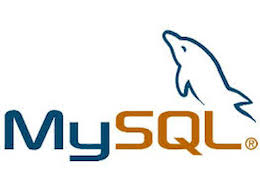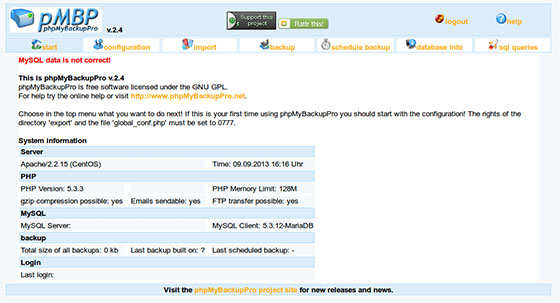
In this tutorial, we will show you how to install and configuration of phpMyBackupPro on your CentOS 7 server. For those of you who didn’t know, phpMyBackupPro is a great and helpful web-based application for backing up MySQL databases. With this free and PHP-based application, you can create a backup of your database with just a few clicks. You can also schedule your backups, manage, download, restore the backups, and a lot more. It supports three compression levels of backups (No compression, zip, or gzip compression). It also supports two alternative security login methods, HTTP and HTML authentication.
This article assumes you have at least basic knowledge of Linux, know how to use the shell, and most importantly, you host your site on your own VPS. The installation is quite simple and assumes you are running in the root account, if not you may need to add ‘sudo‘ to the commands to get root privileges. I will show you the step-by-step installation phpMyBackupPro on a CentOS 7 server.
Prerequisites
- A server running one of the following operating systems: CentOS 7.
- It’s recommended that you use a fresh OS install to prevent any potential issues.
- SSH access to the server (or just open Terminal if you’re on a desktop).
- A
non-root sudo useror access to theroot user. We recommend acting as anon-root sudo user, however, as you can harm your system if you’re not careful when acting as the root.
Install phpMyBackupPro on CentOS 7
Step 1. First, let’s start by ensuring your system is up-to-date.
yum -y update
Step 2. Install the LAMP server.
A CentOS 7 LAMP server is required. If you do not have LAMP installed, you can follow our guide here.
Step 3. Installing phpMyBackupPro.
The first thing to do is to go to phpMyBackupPro’s download page and download the latest stable version of phpMyBackupPro, At the moment of writing this article it is version 2.5:
wget http://nchc.dl.sourceforge.net/project/phpmybackup/phpMyBackupPro/phpMyBackupPro 2.5/phpMyBackupPro-2.5.zip
Unpack the phpMyBackupPro archive to the document root directory on your server:
unzip phpMyBackupPro-2.5.zip* -d /var/www/html/
Rename “phpMyBackupPro-2.5” to more usable name:
mv -f /var/www/html/phpMyBackupPro-2.5/ /var/www/html/phpmybackuppro/
We will need to change some folders permissions:
chown -R apache /var/www/html/phpmybackuppro/
Finally, restart the apache service for the changes to take effects:
systemctl restart httpd.service
Step 4. Accessing phpMyBackupPro.
Now you will be able to access phpMyBackupPro from your browser with URL http://ip-address/phpmybackuppro or http://domain-name/phpmybackuppro. Enter your MySQL details, such as MySQL username and password, FTP username and password, etc., and save the changes. After you save the changes, log out from phpMyBackupPro and log in back again using your MySQL username and password.

Congratulations! You have successfully installed phpMyBackupPro. Thanks for using this tutorial for installing phpMyBackupPro on CentOS 7 system. For additional help or useful information, we recommend you to check the official phpMyBackupPro website.